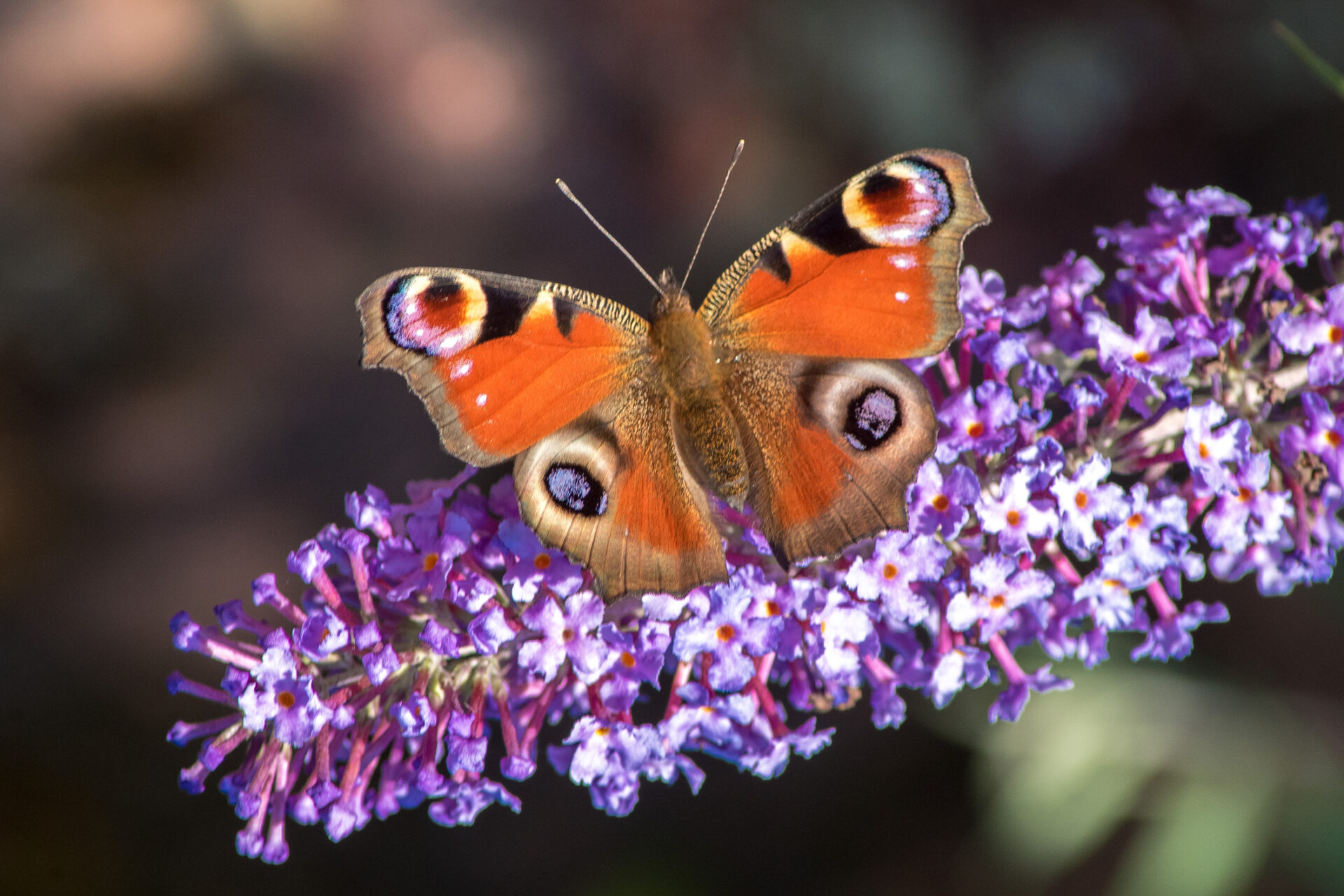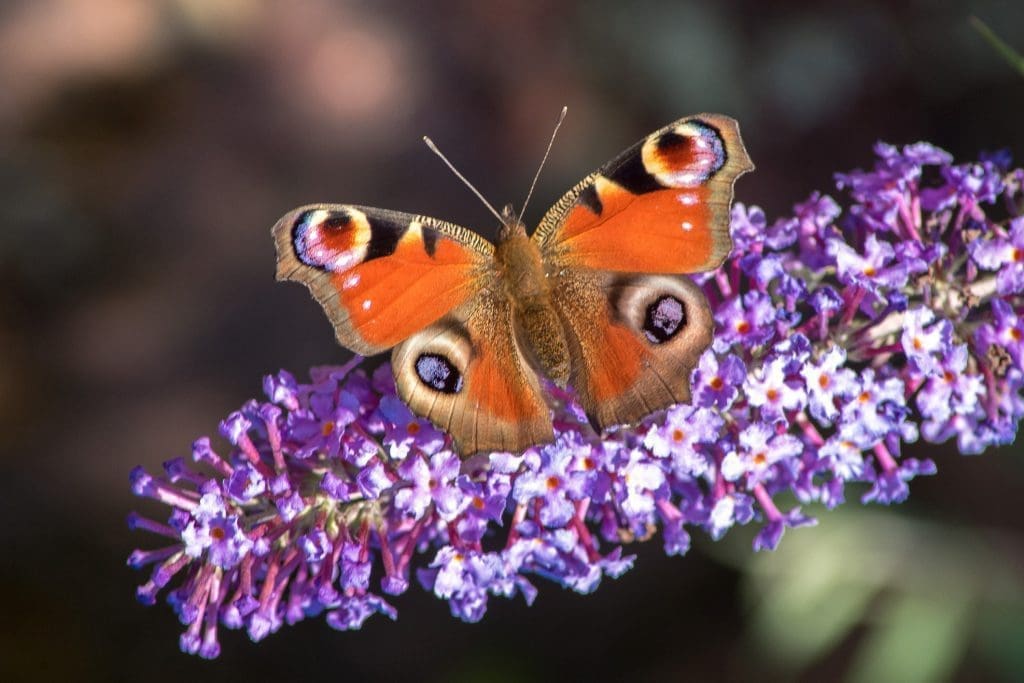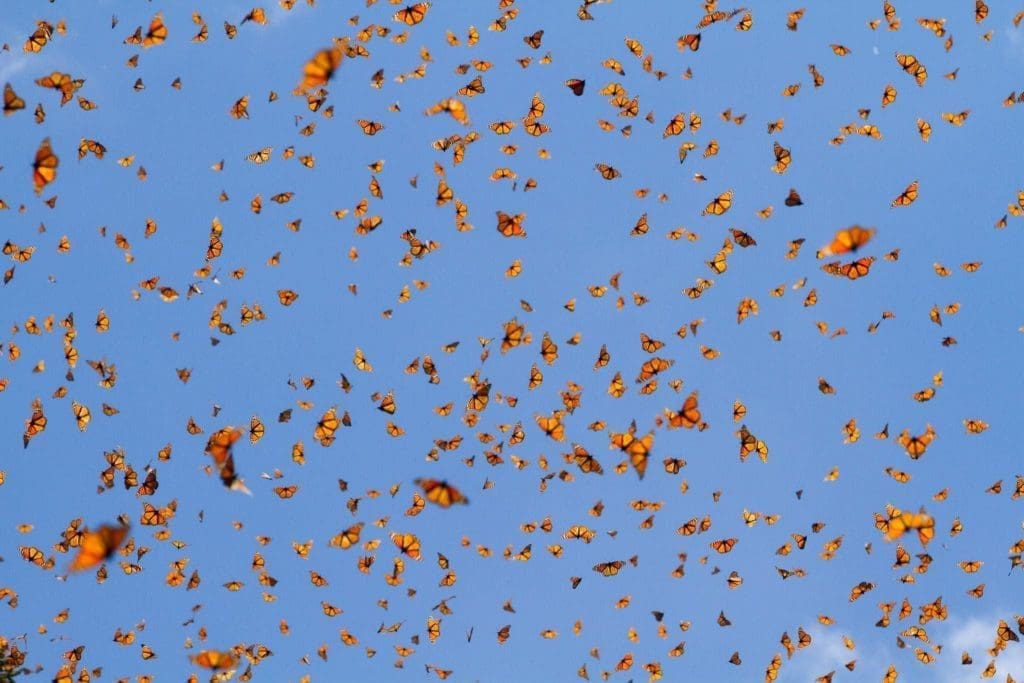
It’s spring, the sun is shining and the butterflies are out.
Butterflies could well be the most universally enjoyed creature – colourful, harmless, floating from plant to plant, bringing life and beauty to the landscape around them. But how exactly do butterflies come to be and are their numbers really declining as current statistics would suggest? Read on to answer these questions and more!
Butterflies are insects in the Lepidoptera order, which also includes their less vibrant (and far less appreciated) friends, the moth. Adult butterflies have four large, brightly coloured wings, and a long, tubular proboscis, which they use to slurp up nectar from flowers. Like all insects, butterflies have three parts to their bodies: head, abdomen, and thorax.
There are six families of butterflies. The largest family is nymphalidae, followed by lycaenidae papilionidae, pieridae, riodinidae and the controversial hesperiidae family. Hesperiidae butterflies, also known as skippers, are not recognised by some institutions and organisations as belonging to a true butterfly family.
Across these six families there exists over 17,500 species of butterfly in the world today.

Over the course of their lifecycle, butterflies will undergo a 4-stage metamorphosis taking them from their egg state through to adulthood. Winged adult butterflies lay eggs (larvae), which then hatch into caterpillars. Caterpillars then feed on the plants on which they’ve been laid, growing bigger and bigger, all the while pupating into a chrysalis.
There is no set time frame for this cycle. A caterpillar’s skin may shed four or more times before becoming embalmed in the chrysalis, and some species will even remain dormant in one stage or another in order to survive harsh winters. Once this process is complete, the chrysalis will split open and the adult butterfly will climb out. After the butterfly’s wings have expanded and dried out, they will fly away to begin their final, adult stage of life.
Put simply, a butterfly’s life cycle spans egg, larvae (caterpillar), pupae (chrysalis), and imago (adult) states. Butterflies can live from as little as a week to nearly a full year, depending on the species and environmental factors.
Butterflies are most well known for their brightly coloured and intricately patterned wings. Their delicate wings are covered in tiny scales and are very fragile to the touch. A butterfly’s wing colour is determined by two major features: pigmentation and structural colouration. For example, melanin in the scales results in blacks and browns, while the blues, reds, greens and iridescents are created via visual effects such as refraction and diffraction.
Many butterfly species are polymorphic, meaning they can use mimicry, camouflage or aposematism to change or augment their physical appearance to protect and hide from or appear unappealing to prey.
Some butterflies are also known to migrate over long distances.
In short, the answer is yes, butterfly numbers do seem to be reducing globally. The reasons for this have mostly been attributed to climate change, more specifically to habitat loss and degradation, and the increase in chemical pollution both in the air and on the ground. Warmer weather is also an oft-cited reason for the declining numbers of these colourful insects. This could be because plants are dying off earlier, resulting in a lack of nectar for the butterflies, or it could be due to the less predictable seasons which the butterfly life cycle relies so heavily upon.

We may not be lepidopterists (butterfly and moth experts), but we can definitely help you in a range of other areas. We specialise in SDS management, risk assessment, 24/7 Emergency Response, asset management, Heat Maps, and much more. Contact us today on sa***@*******ch.net to find out more.
Sources: